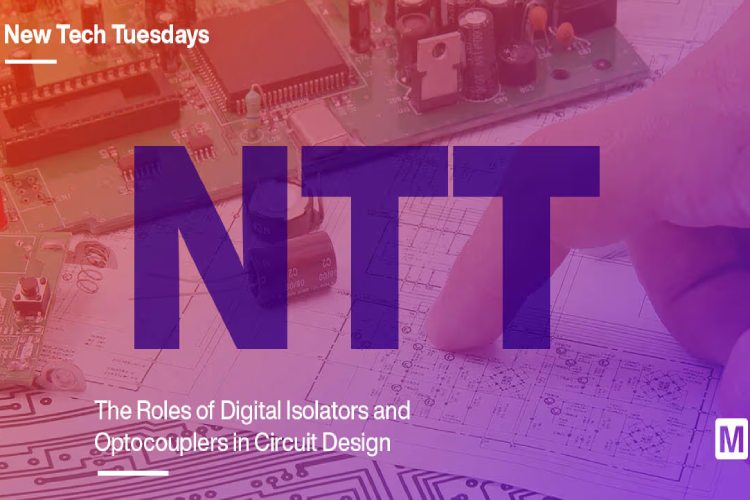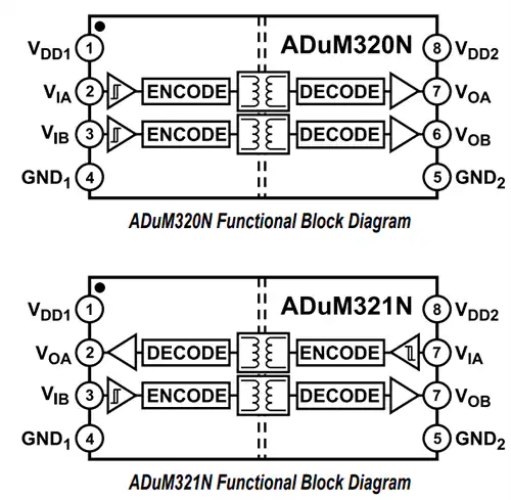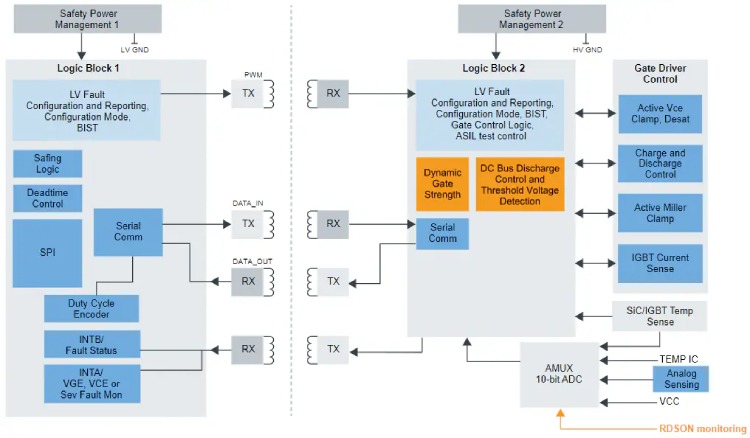
Once an electrical design engineer moves beyond initial conceptual sketches and delves into the core of the circuit design, incorporating digital isolators and optocouplers quickly becomes integral to the beta design phase of the project.
Digital isolators and optocouplers serve similar purposes in electronics. Both devices provide electrical isolation between two circuits while allowing communication or signal transfer between them. However, they achieve this isolation through different mechanisms, and each device has its own figure of merit (FOM) used to evaluate its performance, efficiency, and suitability for specific applications.
In this week’s New Tech Tuesday, we look at the purpose of digital isolators and optocouplers in circuit design, how they differ, and their optimal applications.
Digital Isolators
Digital isolators are semiconductors that provide electrical isolation between input and output circuits using capacitive, magnetic, or optical isolation techniques. They are primarily used for galvanic isolation—preventing the flow of electrical current between two circuits— or signal isolation—transmitting digital signals across isolated circuits without a direct electrical connection.
Digital isolators transmit signals across isolation barriers using capacitive or magnetic coupling techniques. They typically consist of two digital signal paths separated by insulation, with signal transfer occurring through a modulated carrier signal.
While digital isolators generally consume less power and can achieve higher data transmission rates than optocouplers, they may have more limitations on voltage range.
Optocouplers
Optocouplers, also called optoisolators, use light-emitting and light-sensing components to provide electrical isolation between input and output circuits. They are commonly used for galvanic isolation, noise immunity, or voltage level shifting.
Optocouplers consist of a light-emitting diode (LED) on the input side and a photodetector on the output side. Isolation is achieved by modulating the LED with the input signal, which in turn emits light that is detected by the photodetector, generating an output signal.
Optocouplers are generally more cost-effective compared to digital isolators and are suitable for a wider range of voltage levels. However, they offer slower data transmission rates compared to digital isolators and can degrade over time due to the aging effects of the LED and photodetector components.
The Newest Products for Your Newest Designs
This week’s New Tech Tuesday features galvanic isolation products from Analog Devices and NXP Semiconductors. These products are uniquely suited for applications that require high-speed digital signal transmission or high-voltage isolation.
Analog Devices ADuM320N and ADuM321N dual digital isolators (Figure 1) are high-performance devices that leverage iCoupler® technology to provide robust digital isolation. These dual-channel isolators integrate high-speed CMOS and monolithic transformer technology, allowing data transmission without direct electrical connection. Unlike traditional optocouplers, which use LEDs and photodetectors to transmit data optically, iCoupler technology uses micro-transformers to achieve isolation. They support high data rates up to several megabits per second, ensuring minimal signal delay and jitter.

Figure 1: The ADuM320N and ADuM321N digital isolators offer independent data channels in various configurations. (Source: Analog Devices)
NXP Semiconductors GD3162 Advanced IGBT/SiC gate drivers are designed to drive the latest silicon carbide (SiC) and insulated gate bipolar transistor (IGBT) modules, particularly for electric vehicle (EV) traction inverters. The GD3162 is a single-channel, galvanically isolated gate driver that provides robust isolation between the control and power stages. This isolation is crucial for maintaining signal integrity and protecting low-voltage control circuitry from high-voltage power transients.

Figure 2: The GD3162 is an advanced, AEC-Q100 grade 1 qualified, single-channel gate driver designed to drive SiC and IGBT modules for EV traction inverters. (Source: NXP Semiconductors)
Tuesday’s Takeaway
Digital isolators and optocouplers perform similar functions in electronics, providing electrical isolation between two circuits while allowing communication or signal transfer between them. However, they achieve this isolation through different mechanisms and have distinct characteristics. Digital isolators provide faster data rates, reduced power consumption, and longer lifespans, but they can be more expensive and have limited voltage ranges. On the other hand, optocouplers provide greater voltage isolation and wider voltage ranges while being cost-effective; yet, they may have slower data rates and are vulnerable to aging effects. Ultimately, the engineer's electrical design requirements and the device’s FOM determine the decision between them.
Original Source: Mouser
About the Author
 Rudy is a member of the Technical Content Marketing team at Mouser Electronics, bringing 35+ years of expertise in advanced electromechanical systems, robotics, pneumatics, vacuum systems, high voltage, semiconductor manufacturing, military hardware, and project management. As a technology subject matter expert, Rudy supports global marketing efforts through his extensive product knowledge and by creating and editing technical content for Mouser's website. Rudy has authored technical articles appearing in engineering websites and holds a BS in Technical Management and an MBA with a concentration in Project Management. Prior to Mouser, Rudy worked for National Semiconductor and Texas Instruments.
Rudy is a member of the Technical Content Marketing team at Mouser Electronics, bringing 35+ years of expertise in advanced electromechanical systems, robotics, pneumatics, vacuum systems, high voltage, semiconductor manufacturing, military hardware, and project management. As a technology subject matter expert, Rudy supports global marketing efforts through his extensive product knowledge and by creating and editing technical content for Mouser's website. Rudy has authored technical articles appearing in engineering websites and holds a BS in Technical Management and an MBA with a concentration in Project Management. Prior to Mouser, Rudy worked for National Semiconductor and Texas Instruments.





